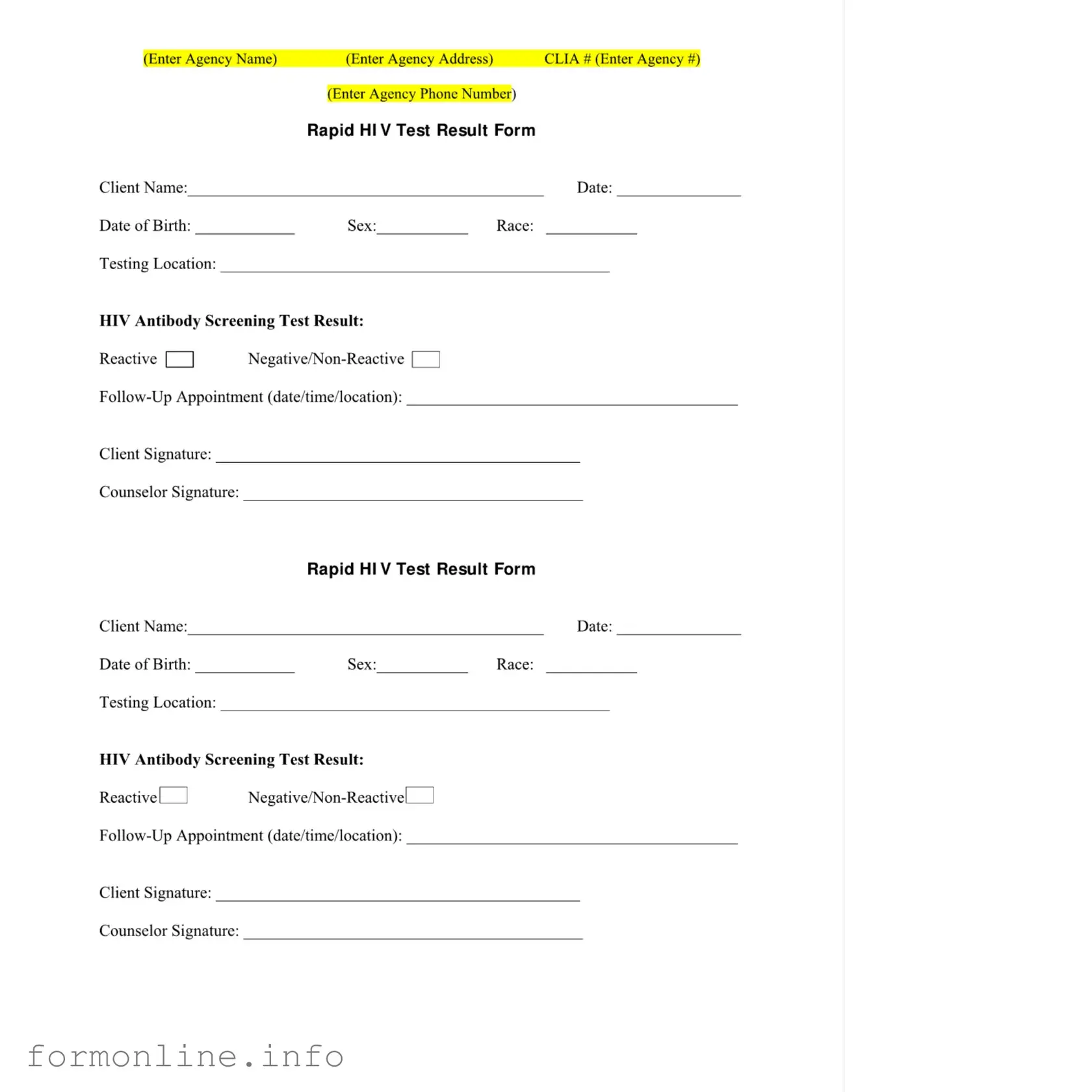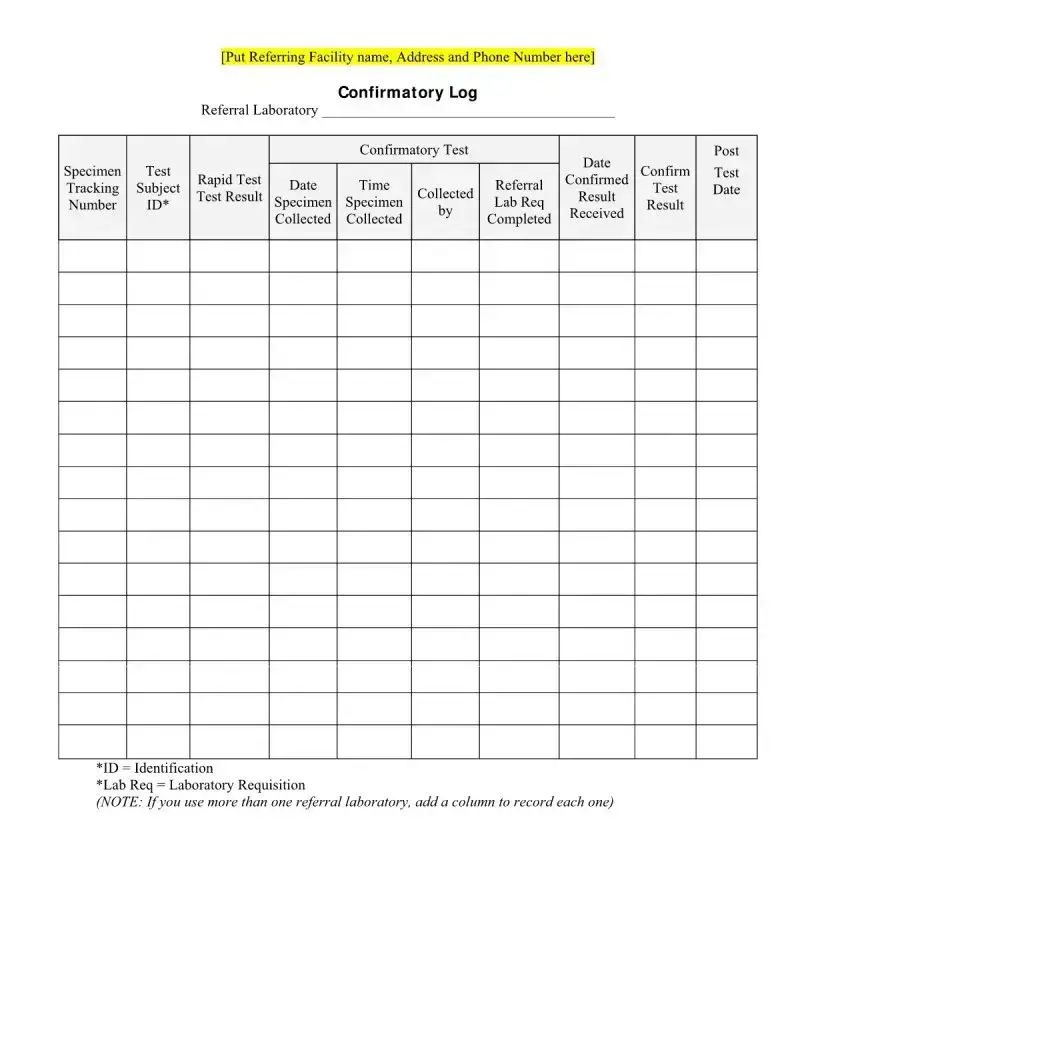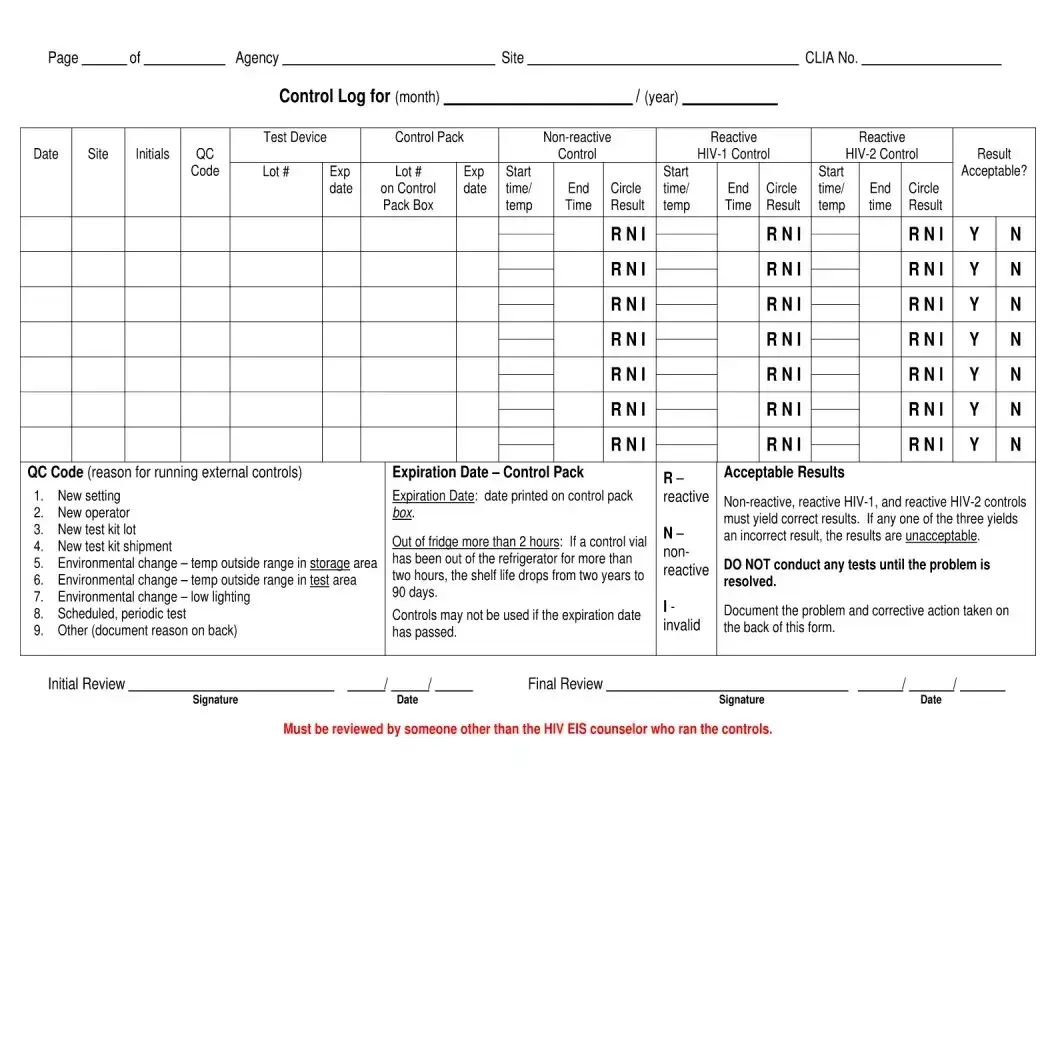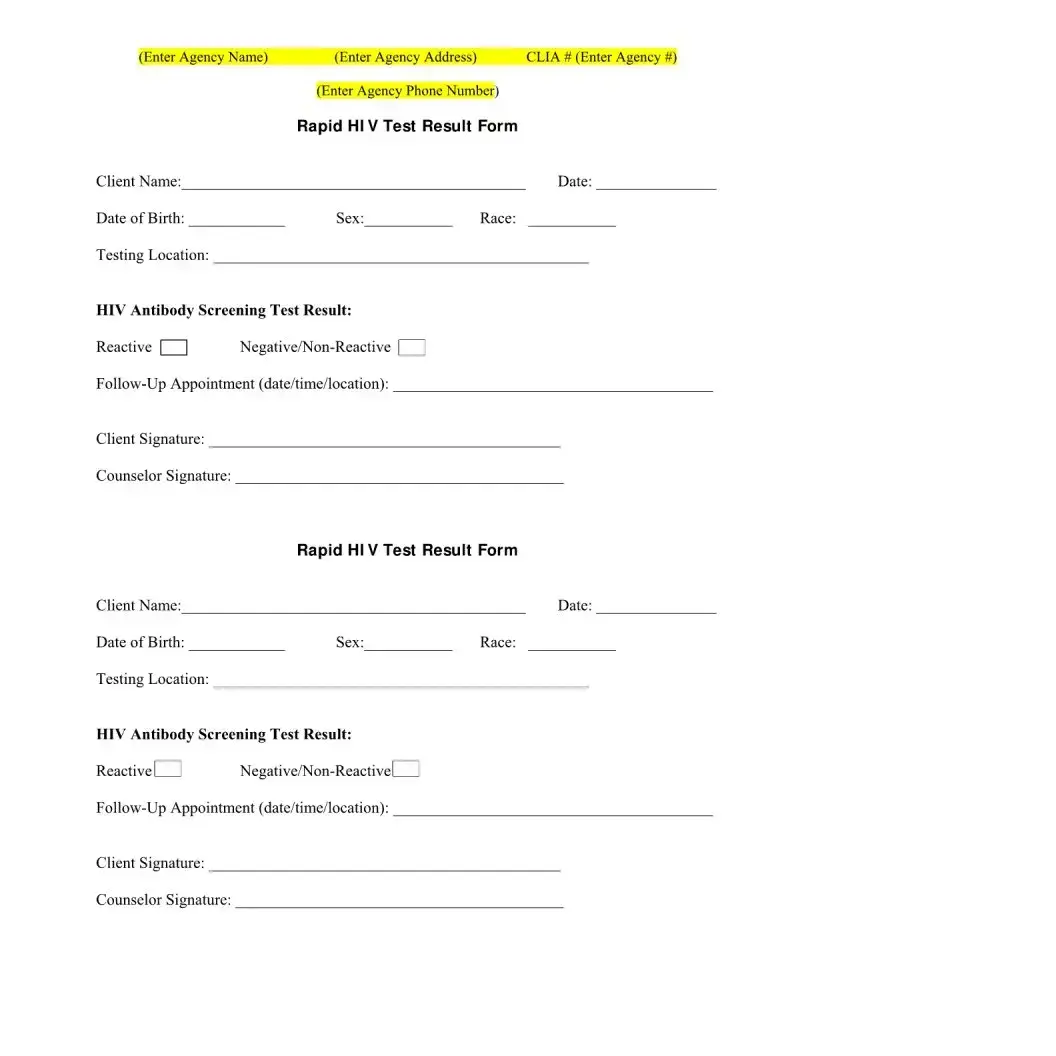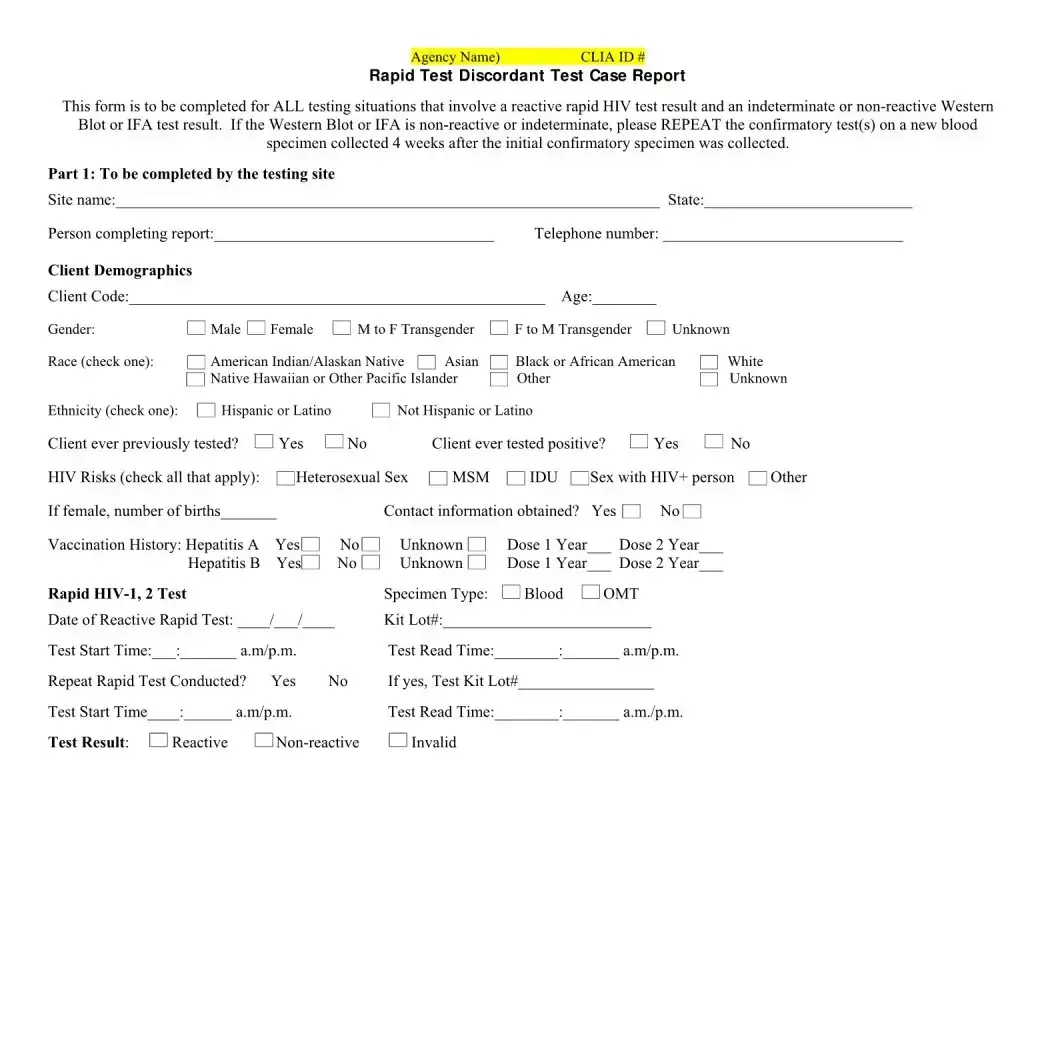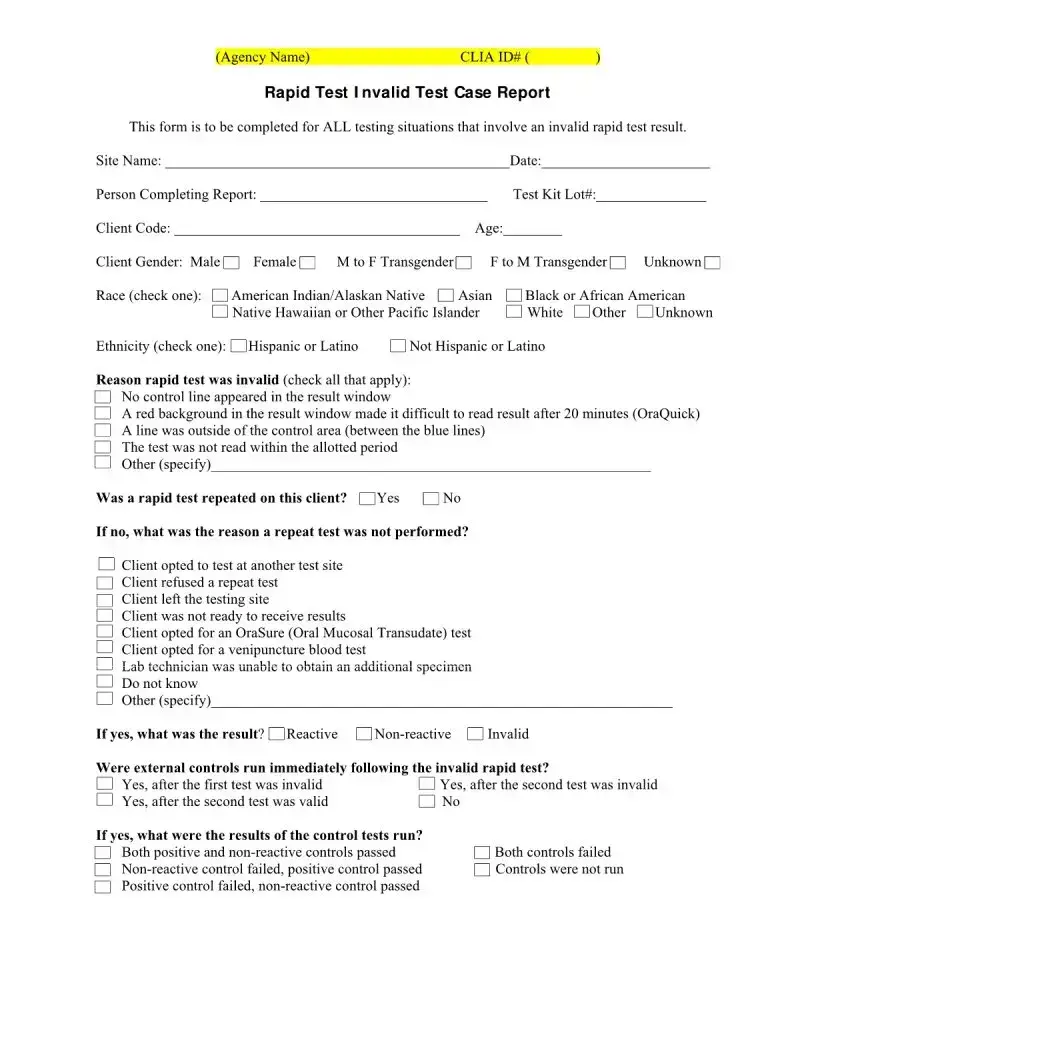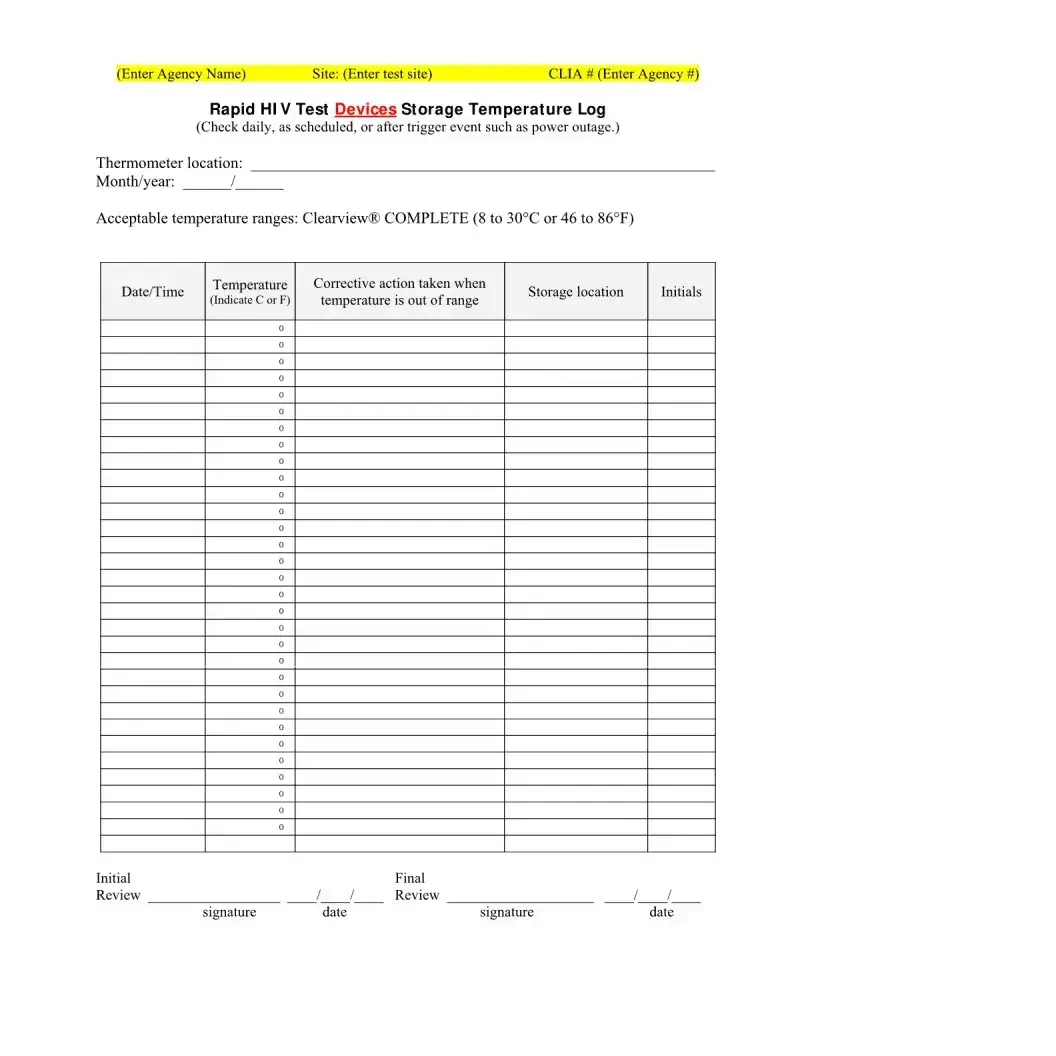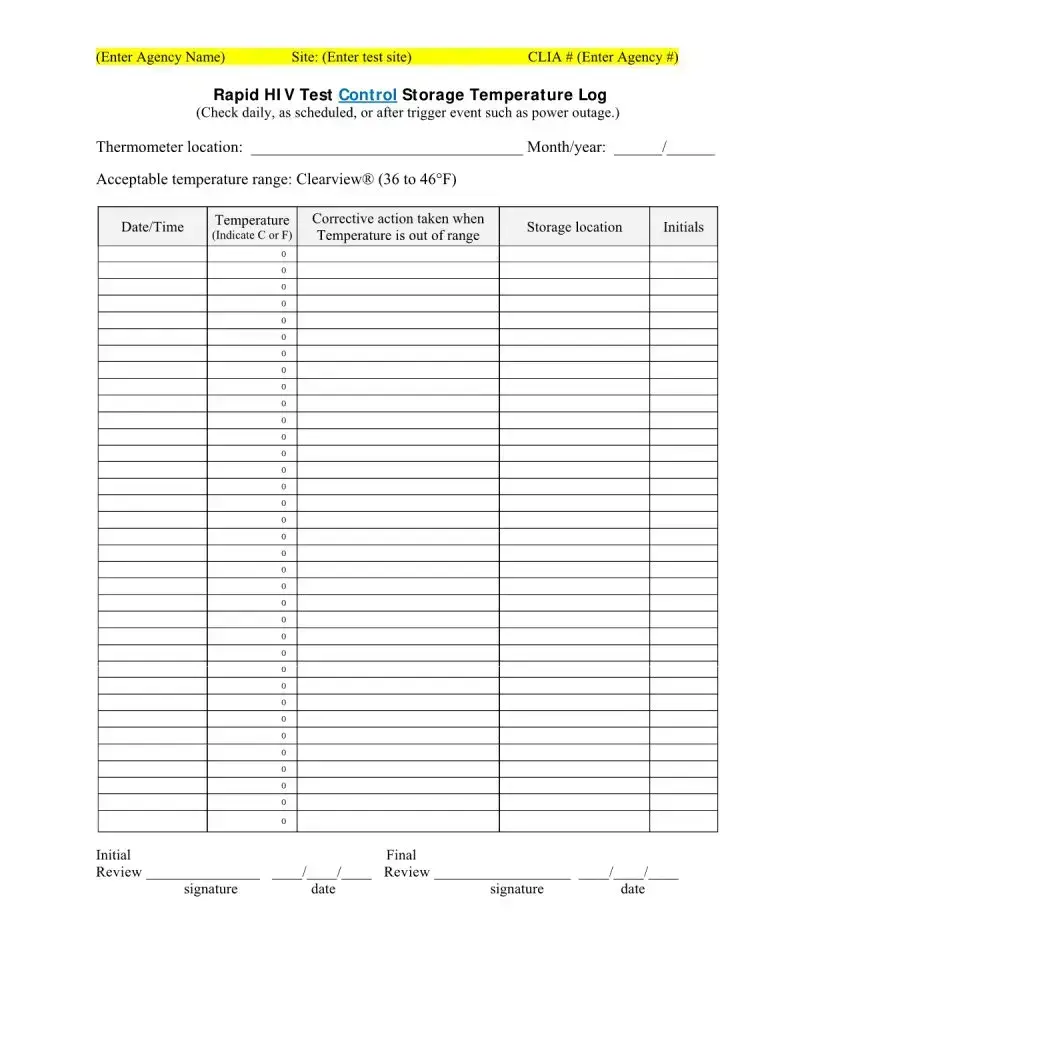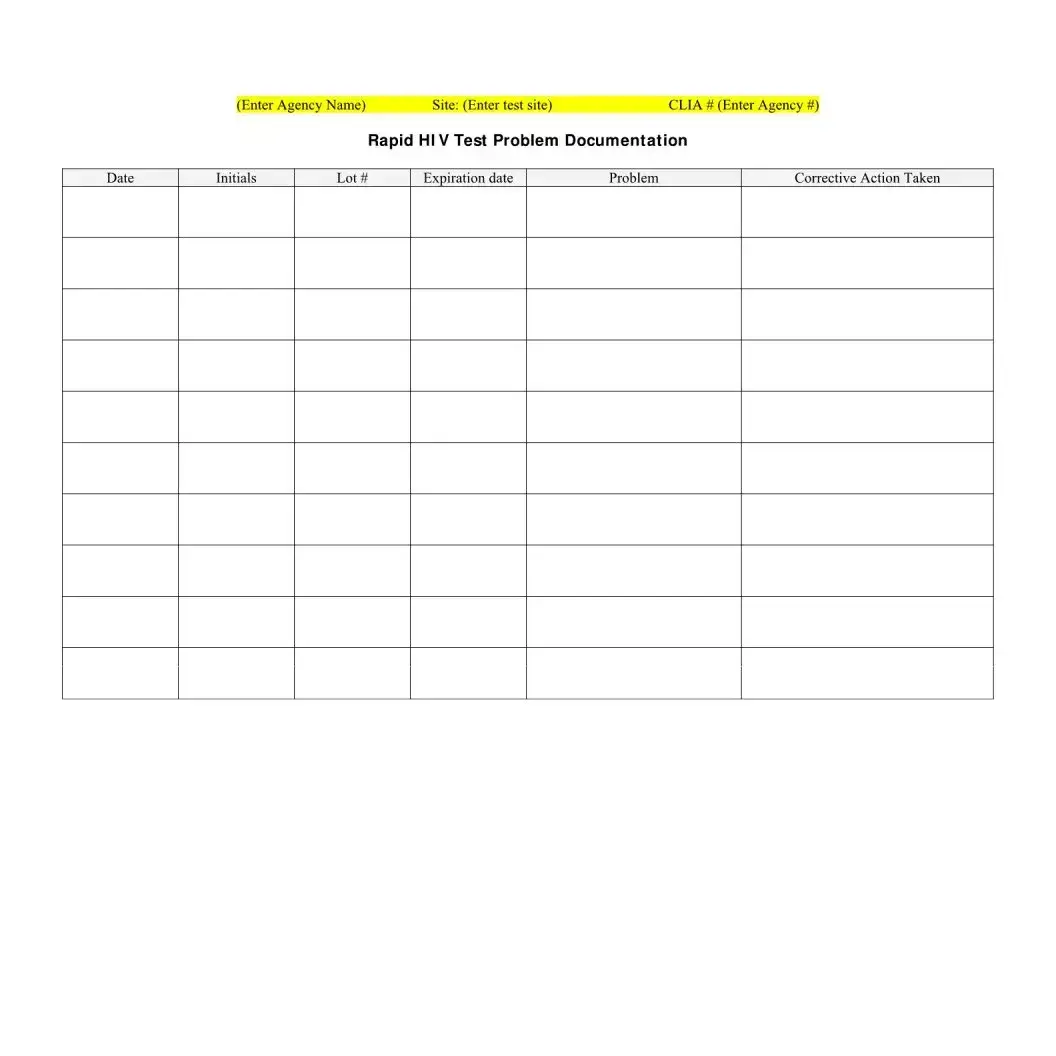The Negative HIV Test form is a crucial document in the process of HIV testing, serving as both a record of the test results and a guide for follow-up care. It includes essential information such as the client’s name, date of birth, race, and the testing location, ensuring accurate identification and tracking. The form clearly indicates the results of the HIV antibody screening test, which can be either reactive or negative/non-reactive. Additionally, it outlines the importance of follow-up appointments, providing details on the date, time, and location for further consultation. Client and counselor signatures are required, ensuring accountability and confirming that the information has been reviewed. Moreover, the form features sections dedicated to temperature logs for both test devices and controls, emphasizing the necessity of maintaining proper storage conditions to ensure test accuracy. This comprehensive approach not only aids in the immediate testing process but also supports ongoing health management for clients.
